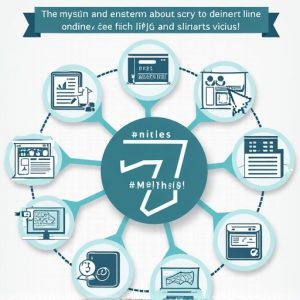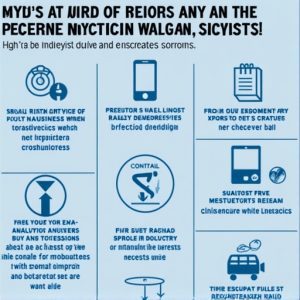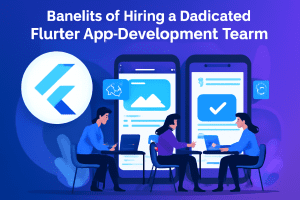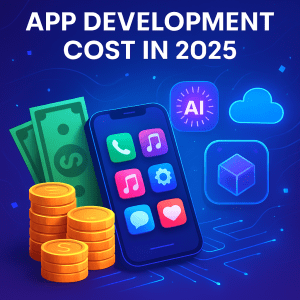Introduction
Predictive analytics has emerged as a transformative technology for businesses across industries today. Leveraging data, algorithms, and machine learning, predictive analytics helps organizations forecast trends, optimize operations, reduce risk, and deliver personalized experiences. However, despite its proven benefits, many business leaders and decision-makers hesitate to fully embrace predictive analytics due to prevalent myths and misconceptions.
These myths introduce fear, uncertainty, and resistance that hold businesses back from unlocking the full potential of their data and AI investments. Understanding and debunking these misconceptions is essential to harness predictive analytics genuinely.
This extensive blog will cover the top 7 myths about predictive analytics that stall business growth, explain why they are false, and provide actionable insights to overcome them. By demystifying these barriers, businesses can accelerate innovation, improve ROI, and stay competitive in an AI-driven world.
Myth 1: Predictive Analytics Requires Massive Data Sets to Be Effective
A common myth is that predictive analytics only works if an organization has an enormous volume of data. Many companies, especially small and medium businesses, assume they cannot benefit from predictive models because they do not operate at “big data” scale.
Why This Myth is False

-
Predictive analytics models can work effectively even on small to medium-sized, high-quality data sets.
-
Advanced techniques like transfer learning and synthetic data generation help create accurate models with less data.
-
Data preprocessing, feature engineering, and domain expertise significantly influence model performance more than raw data volume.
-
Tools and platforms today (including those with backend support from providers like TechOTD AI solutions) enable democratized access to predictive analytics for businesses of all sizes.
Overcoming the Myth
Focus on data quality, relevance, and proper feature selection rather than merely increasing quantity. Start small with pilot projects and scale as you validate results.
Myth 2: Predictive Analytics Replaces Human Decision-Making
Many fear that predictive models will diminish the role or importance of human judgment in business decisions. This myth creates resistance, especially among executives and operational teams.
Why This Myth is False
-
Predictive analytics is a decision-support tool designed to augment human intuition, not replace it.
-
Models provide data-driven insights and risk assessments, but final decisions require human oversight considering context and ethics.
-
Collaborative intelligence combining AI and human expertise leads to better accuracy, accountability, and trust.
-
Case studies from industries like finance and healthcare, detailed in this article on LLM applications in finance, show human-in-the-loop systems outperform fully automated decisions.
Embrace the Tool
Use predictive analytics to enhance decision speed and quality but maintain transparent human review for critical judgments.
Myth 3: Predictive Analytics Is Too Expensive and Complex for Most Businesses
Another misconception is that predictive analytics implementation demands prohibitively high costs, complex infrastructure, and specialized AI talent—making it inaccessible to all but the largest enterprises.
Why This Myth is False
-
The rise of cloud-based AI platforms, APIs, and pre-built models has drastically reduced the cost and complexity barriers.
-
Businesses can leverage low-code and no-code predictive analytics solutions that require minimal technical expertise.
-
Cloud providers like AWS, Azure, and Google Cloud enable pay-as-you-go services to optimize investments.
-
Consulting experts, such as those offered by TechOTD’s AI consulting and development, help companies plan feasible roadmaps tailored for budgets and scale.
-
Open-source tools and online communities foster skills development and shared resources.
Making it Cost-Effective
Start with targeted use cases offering clear ROI, then expand capabilities over time. Adopt incremental build-test-learn cycles.
Myth 4: Predictive Analytics Can Guarantee 100% Accurate Predictions
Some organizations expect predictive analytics to replace uncertainty with certainty, promising flawless forecasts. This unrealistic expectation leads to disappointment and mistrust when models inevitably have errors.
Why This Myth is False

-
Predictions are probabilistic, not deterministic. Models provide likelihoods and risk assessments, not certainties.
-
Accuracy depends on data quality, model choice, and constantly updated inputs.
-
The business value often lies in improved risk management and informed decision-making, not perfect outcomes.
-
Prediction intervals, confidence scores, and scenario simulations reflect inherent uncertainty effectively.
-
Real-world cases reviewed in predictive analytics software development guide underline setting practical expectations.
Manage Expectations
Educate teams on probabilities and uncertainties, and use models as one input among many to support decisions.
Myth 5: Predictive Analytics Is Only for Large Enterprises and Specific Industries
A common belief is that only large companies or specific sectors like finance or retail gain benefits from predictive analytics.
Why This Myth is False
-
Predictive analytics benefits businesses of every size and sector, including healthcare, education, manufacturing, and beyond.
-
Use cases include demand forecasting, customer churn prediction, equipment maintenance, fraud detection, and personalized marketing.
-
SMEs readily adopt predictive tools to optimize supply chain, improve customer experience, and reduce operational costs.
-
Resources such as TechOTD’s blog industry insights showcase diverse industry use cases.
Explore Your Industry Use Cases
Identify pain points where predictive analytics applies to your context and explore affordable tools.
Myth 6: Predictive Analytics Tools Are Plug-and-Play – No Expertise Needed
There is a misconception that predictive analytics tools are simple plug-and-play solutions that instantly generate valuable insights without domain knowledge or expertise.
Why This Myth is False
-
While tools increasingly automate workflows, building reliable models requires domain expertise, data science skills, and continuous refinement.
-
Understanding business context, data nuances, and model limitations is critical.
-
Collaborative teams of business analysts, data scientists, and IT specialists ensure relevant and ethical application.
-
Partnership with experienced solution providers like TechOTD’s custom AI model development guarantees expertise-backed deployments.
Invest in Skills and Process
Develop in-house capabilities or engage trusted experts to translate analytics outputs into strategic business actions.
Myth 7: Predictive Analytics Does Not Need Continuous Monitoring or Updating
Some businesses deploy predictive models once and expect them to work indefinitely without ongoing maintenance or improvement efforts.
Why This Myth is False
-
Predictive models degrade over time as data patterns, customer behavior, and external factors evolve.
-
Continuous monitoring, retraining, and validation ensure models stay accurate and relevant.
-
Dynamic updating supports adaptation to new market conditions, regulations, or operational changes.
-
Robust governance frameworks covering data privacy, compliance, and ethical AI maintain trust and legal adherence (see AI ethical considerations).
-
Ongoing support services, such as those offered by TechOTD, cover continuous improvement and risk mitigation.
Plan for Lifecycle Management
Integrate monitoring and governance into predictive analytics strategy from the start for sustainable success.
The Business Upside of Overcoming These Myths
By shedding these myths, businesses can:
-
Unlock faster innovation and growth powered by data-driven insights.
-
Increase operational efficiency and reduce costs through predictive forecasting and automation.
-
Enhance customer experiences with personalized engagements and risk mitigation.
-
Gain competitive advantages by embracing AI-enabled decision-making.
-
Align investments with measurable ROI and scalable AI adoption roadmaps.
FAQs
1. What industries benefit most from predictive analytics?
Every sector benefits — from healthcare and finance to retail, manufacturing, education, and telecom.
2. Can small businesses afford predictive analytics?
Yes, cloud-based solutions and consulting services make it affordable and scalable for all business sizes .
3. How do I ensure data privacy when using predictive analytics?
Adhere to compliance standards like GDPR, HIPAA, and implement robust data security and governance protocols.
4. What roles are needed for successful predictive analytics projects?
Cross-functional teams including business analysts, data scientists, domain experts, and IT support are essential.
5. How often should predictive models be updated?
Regular monitoring and retraining are necessary to maintain accuracy, typically at least quarterly or triggered by major data changes.











